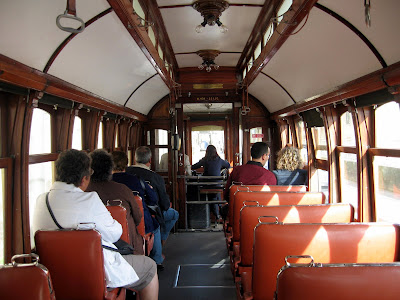There are three narrow gauge railways in the Douro Valley; each running southwards from the hills to join the main line to Oporto.

The are not tourist railways but are part of the national network. Trains are infrequent but timetables can easily be found on the CP website. Fares are cheap and tickets can be bought from the conductor.
Sadly the longest line from Tua to Mirandela is closed at present following an accident in August. The replacement service is operated by taxis.1. Amarante station.2. Disused rolling stock at Livracao.3.  Livracao station at kilometre zero with a broad gauge train the back ground. 4. Very open train interior.
Livracao station at kilometre zero with a broad gauge train the back ground. 4. Very open train interior.


























